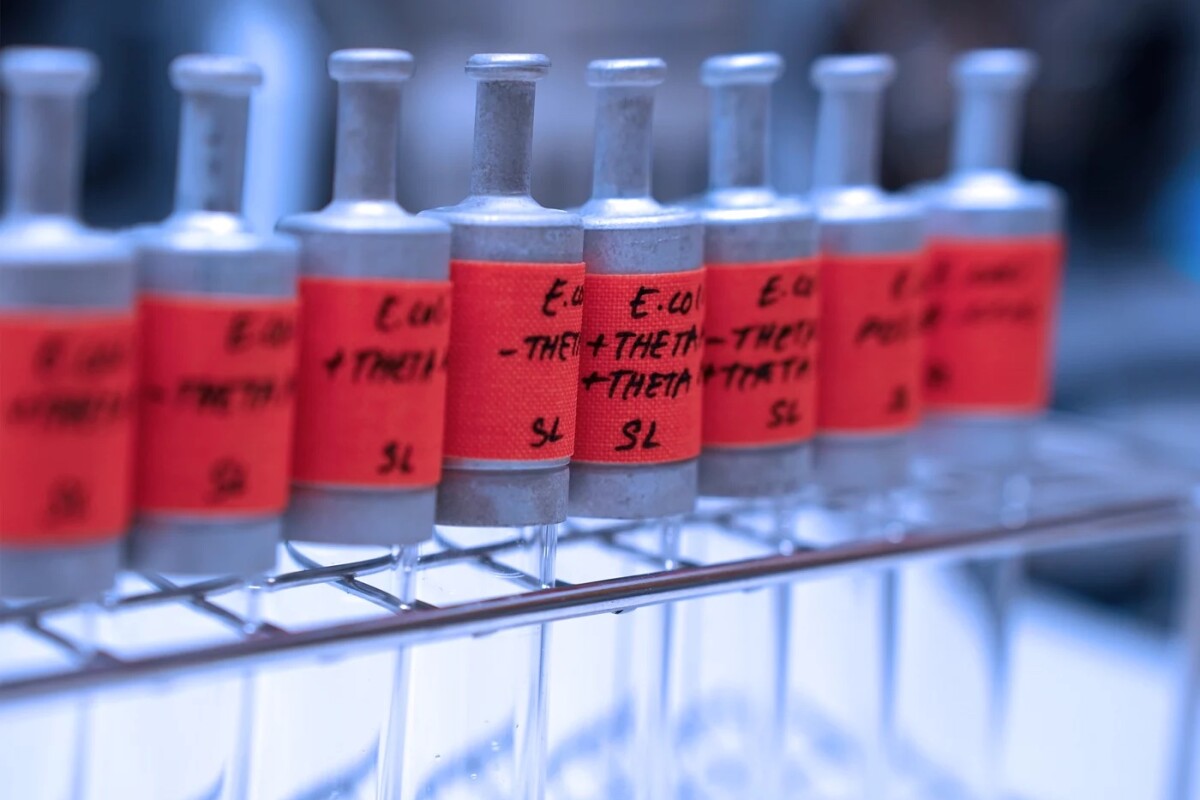
Interesting and promises to produce useful molecules. however we are not replacing lignon soon.
good work though and hopefully those new molecules can displace some we do not want.
as said, this is promising.
Synthetic biology breakthrough fixes CO2 from the air better than nature
January 03, 2024
Vials where the new THETA cycle of CO2 fixing is being tested
Scientists at the Max Planck Institute have developed a synthetic pathway that can capture CO2 from the air more efficiently than in nature, and shown how to implement it into living bacteria. The technique could help make biofuels and other products in a sustainable way.
Plants are famous for their ability to convert carbon dioxide from the air into chemical energy to fuel their growth. With way too much CO2 in the atmosphere already and more being blasted out every day, it’s no wonder scientists are turning to this natural process to help rein levels back in, while producing fuels and other useful molecules on the side.
In the new study, Max Planck scientists developed a brand new CO2-fixation pathway that works even better than nature’s own tried-and-true method. They call it the THETA cycle, and it uses 17 different biocatalysts to produce a molecule called acetyl-CoA, which is a key building block in a range of biofuels, materials and pharmaceuticals.
The cycle is built around the two fastest known CO2-fixing enzymes – crotonyl-CoA carboxylase/reductase and phosphoenolpyruvate carboxylase, for those playing at home – which were isolated from bacteria. Even though each of these alone is more than 10 times faster at capturing CO2 than the primary enzyme plants use, evolution doesn’t seem to have naturally paired them up yet. So, the scientists did instead.
First, the team constructed the THETA cycle in test tubes to confirm its functionality, of capturing two CO2 molecules from the air and converting them into one acetyl-CoA molecule. Then, the researchers optimized it over several rounds of experiments to boost its yield 100 times over. Finally, they set about incorporating the cycle into living cells – namely, E. coli.
The 17-step process is currently too complicated for one cell to handle, so the team split it up into three modules and incorporated these into E. coli. Sure enough, each module worked as hoped. The next step is to squeeze it all into one, but this will require synchronizing each step with the natural metabolism of E. coli.
In the meantime though, this milestone is still important, the team says. The technique could be adapted to instruct microbes to produce a whole range of valuable compounds.
“What is special about this cycle is that it contains several intermediates that serve as central metabolites in the bacterium's metabolism,” said Shanshan Luo, lead author of the study. “This overlap offers the opportunity to develop a modular approach for its implementation. Our cycle has the potential to become a versatile platform for producing valuable compounds directly from CO2 through extending its output molecule, acetyl-CoA.”
The research was published in the journal Nature Catalysis.
No comments:
Post a Comment